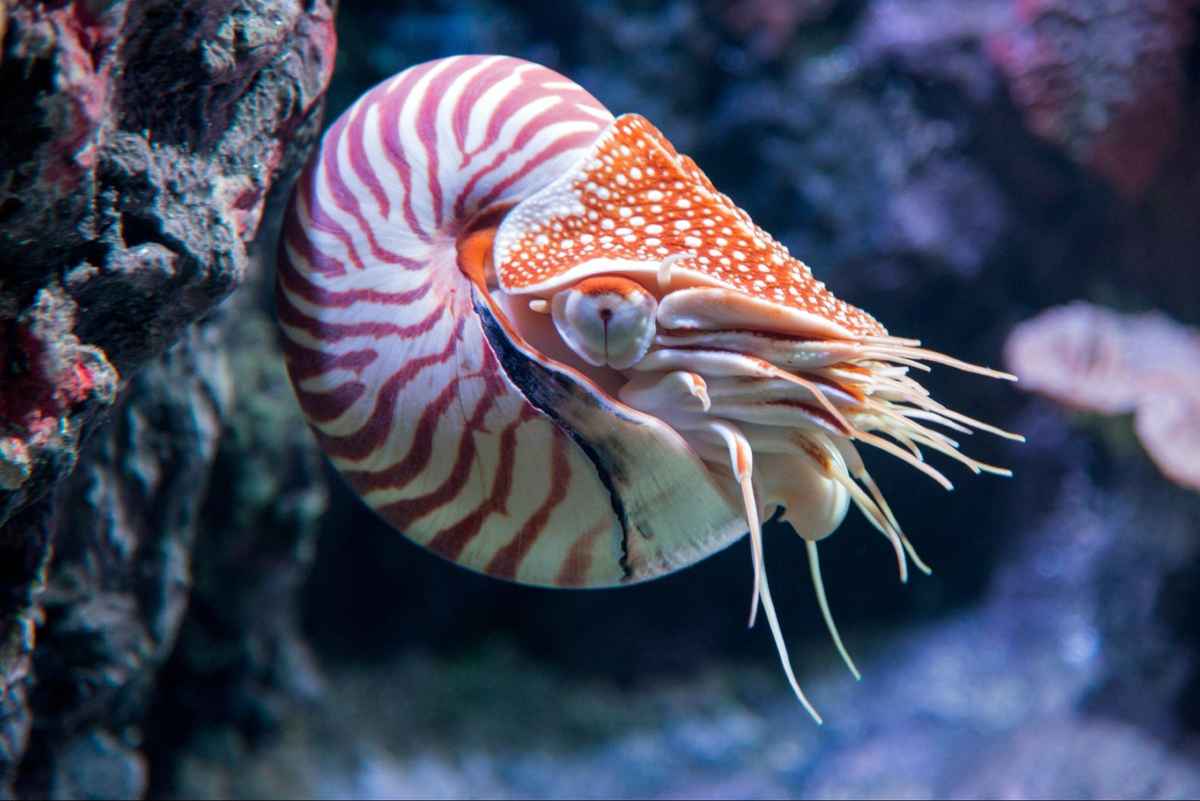How Did Eyes Evolve? A Fascinating History
Did you know the first eyes recorded in history were likely just light sensors? And that our eyes are also called camera eyes?
There’s plenty we may not know about the organ you’re using to read these words right now, which is why today we’ll explore the fascinating history of eyes.
We’ve also got tips on how to care for them properly, so read on!
The origins of eyes
The fossil record (all of the fossils which have been found and the information about them) shows that the first eyes ever documented belonged to a trilobite (an extinct animal without a backbone that lived during the Paleozoic period), the Olenellus fowleri.
Believed to have existed between 550 and 600 million years ago, this ancient arthropod already boasted eyes.
Simple light-sensitive structures started to develop in early organisms
Scientists believe that over 541 million years ago, life thrived in a shadowy realm where color held no significance.
With most creatures unable to see, the need for concealment, warning signs, or enticing patterns was virtually nonexistent.
However, some organisms may have been able to distinguish light from dark with their eyespots.
Then the Cambrian Period started, and life finally awakened with the evolution of eyes.
This era witnessed the emergence of virtually every major animal group, making the fossil record more diverse than ever before.
How complex eyes evolved across various animal groups
The aforementioned eyespot developed into either a concave cup or a convex protrusion. Both are more sophisticated visual organs that provided primitive spatial information.
The concave cup evolved into a pinhole, as seen in abalones’ and nautiluses’ eyes.
Later on, the addition of crystalline lenses (natural lenses found in humans and many animals) led to a diverse composition of lenses in different organisms.
For example, the lenses in birds’ eyes are soft and highly flexible, while fish lenses are hard and less flexible.
As creatures adapted further to their environments, they developed essential features such as lenses, corneas, extraocular muscles, and ocular adnexa (which includes eye parts like eyelids and eyelashes).
That is how the concave cup became the camera-style eye, otherwise known as the eye that humans and many animals have today.
On the other hand, the bulge or convex protrusion from eyespot cells was further enhanced by adding a lens and often another one near the first lens.
This resulted in the creation of an ommatidium, a single unit which when packed together forms ommatidia.
These in turn make up a type of eye called the compound eye, found in arthropods like insects and crustaceans.
Through gene duplication, multiple ommatidia can be produced, culminating in up to a staggering 30,000 individual units, like in a fly’s compound eye!
The many different types of eyes
Camera eyes, like the ones humans have, are also found in larger animals. They’re called such as they function like the lens of a camera.
With this eye structure, one lens captures and directs the light to the retina, which then sends signals to the brain.
The signals are interpreted and become images in the brain.
Some aquatic creatures like jellyfish or starfish only have eyespots. They don’t have lenses, and mainly work to detect light and darkness.
These signals are then sent to the creatures’ brains.
Other animals have both eyespots and compound eyes. For instance, the bee has a pair of compound eyes and three eyespots.
Compound eyes, consisting of up to thousands of ommatidia, offer a vast visual field and can detect fast movement better compared to simple eyes.
However, these intricate eyes sacrifice resolution for range, meaning they don’t pick up details as clearly as ours do.
Various theories of eye evolution
1. Darwin’s theory of natural selection
Charles Darwin proposed that a singular, rudimentary eye prototype emerged long ago, and that natural selection ultimately led to the variety of eyes we see in nature today.
Now, molecular biology has lent supporting evidence to this remarkable idea.
The existence of genes guiding eye development appear remarkably consistent across the animal kingdom, strongly hinting that the eye’s birth was a singular, monumental event in the story of life.
2. Theory of evolutionary co-option or exaptation
Billions of years ago, microscopic free-roaming organisms such as mitochondria and plastids were swallowed by other cells.
Instead of being devoured, they forged a symbiotic relationship, benefiting from each other.
Ultimately, that gave rise to the first eukaryotes, which are organisms with a membrane-enclosed nucleus.
When the mitochondria (a cell’s source of fuel) and plastids (light-sensitive pigments used in photosynthesis) were engulfed by cells, a new purpose was born for the three — sight.
This process is known as co-option (or exaptation), where an existing feature is given a new function.
According to the theory of evolutionary co-option, eyes didn’t simply evolve from scratch.
Eukaryotes called warnowiids modified their pre-existing parts and assigned them a different function.
3. The role of genetic mutations in the evolution of eyes
As random changes occurred in genetic material over time, natural selection favored mutations that granted better visual abilities or advantages.
This ongoing process of trial and error has led to incredible innovations within eye structure and function, allowing species to adapt and thrive in various environments.
Genetic mutations have driven the history of eye evolution, from developing photoreceptors that detect light to forming the intricate anatomy that enables eyes to sharpen their focus.
What is the evidence for eye evolution?
The remarkable discovery of fossils such as F. protensa — the ancient relative of crabs, lobsters, and insects — sheds light on the fascinating evolution of complex, well-developed eyes in marine invertebrates (animals without backbones) which began approximately 517 million years ago, during the early Cambrian period.
While it is difficult to identify the exact moment and location that complex, image-forming eyes originated, we can gather valuable insights from molecular dating.
Through the analysis of DNA sequences in living animals, researchers have determined that a common set of genes crucial for eye development emerged before the Cambrian period.
The rapid evolution of eyes during the Cambrian Period may have been the catalyst for the Cambrian explosion (often called the “Biological Big Bang” because of the relatively short time it took for the diversity of life forms to appear).
The emergence of eyes provided a tremendous advantage, allowing creatures to navigate complex environments, locate food, escape predators, and capture prey.
As a result, this ignited an arms race among species, where those without vision simply could not compete.
From this starting point, the diversity of eyes in nature has expanded vastly, with some animals now possessing highly sophisticated visual systems.
For example, the mantis shrimp boasts 12 to 16 visual pigments, granting it unparalleled color perception and even the ability to process polarized light.
Our eyes are also intricate masterpieces. The human eye can process a million impressions simultaneously and distinguish between a dazzling spectrum of eight million hues.
Fast-forward to today: care for your eyes
Being such intricate and vital organs, our eyes require proper attention and care to ensure they function well.
One key tip is to get regular eye exams, which can help detect potential issues before they escalate and hamper our vision.
In addition, an eye exam can tell you whether you have vision issues like nearsightedness, farsightedness, and astigmatism and if you need to wear prescription glasses.
Common eye diseases
While the following conditions are common, an eye exam is usually sufficient to detect them.
- Cataracts
- Diabetes-related retinopathy
- Glaucoma
- Age-related macular degeneration (AMD)
As we age, the macula — a crucial part of the retina responsible for central vision — deteriorates, leading to difficulties in daily tasks like reading or driving.
Though it rarely results in complete blindness, AMD can significantly impact a person’s quality of life.
Keep an eye out for blurred central vision, distorted images, and dark spots in your central field of vision as all these could be signs of AMD.
How to prevent eye diseases
Simple, proactive steps can help protect you from these eye diseases.
The most basic is to shield your eyes from excessive sun exposure.
A balanced diet rich in antioxidants and sufficient exercise are also essential.
If you’re a smoker, take steps to quit the habit. Otherwise, avoid secondhand smoke as much as possible.
Also, it’s good to monitor your blood sugar levels and blood pressure.
In the event of any changes in your vision, don’t put off a consultation as early detection and treatment can significantly improve your prognosis.
Tips for maintaining healthy eyes
Taking care of your eyesight is essential for enjoying life to the fullest, and a few simple lifestyle adjustments can make all the difference.
- Keep a well-balanced diet rich in leafy greens, fish, and nuts, which provide essential nutrients like omega-3 fatty acids, lutein, and vitamins A and C.
- Shield your eyes from harmful UV rays by wearing sunglasses with 100% UV protection whenever you’re outdoors.
- Prioritize regular breaks from screens to avoid digital eye strain, and adopt the 20-20-20 rule – every 20 minutes, look at something 20 feet away for 20 seconds.
- Schedule routine eye exams.
Our eyes have come so far!
Our eyes as we know them today are a true feat of evolution.
With such an illustrious history, it’d be a shame to not care for them the best that we can.
When we take care of them, they’ll do the same for us by helping us navigate everyday challenges and enabling us to cherish and connect with the world around us.

Written by:
Phoebe Jade

















